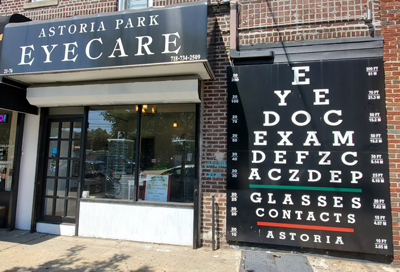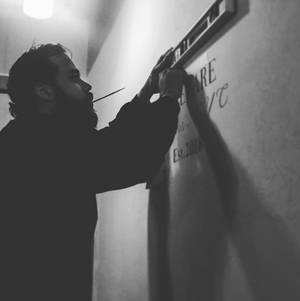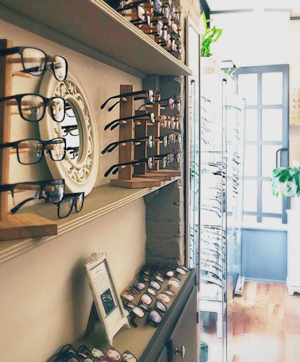
| |
| Rajat Shetty, OD, is the owner, doctor and only staff member at Astoria Park Eyecare. | |
| |  |
| | Astoria Park Eyecare sits on the edge of Astoria Park in Queens, New York. |
ASTORIA, New York—Team work makes the dream work, or so they say. But what if the dream is doing it all yourself? Rajat Shetty, OD, knows what that’s like; his practice, Astoria Park Eyecare, is a one man show. Located in Queen’s trendy, family-oriented Astoria neighborhood, Astoria Park Eyecare sits on the edge of Astoria Park, a large, waterfront park with green space, a public pool, a skate park, a playground, and stunning views of the Manhattan skyline. It’s a prime, peaceful location for a small business—and almost everyone who visits Astoria Park also lives in the neighborhood, so you’re likely to see the same faces—or the same frames—over and over again. That’s what Dr. Shetty, who’s lived in Astoria for six years and grew up just 15 minutes away, likes about it.
| |  |
| | “Most of the stuff in here is built by hand,” Dr. Shetty said of his practice. Image via Astoria Park Eyecare on Instagram. |
Dr. Shetty graduated from SUNY Optometry in 2013, and then worked for 8 months before opening a practice in 2014 with two colleagues. In 2018, he decided to open another—Astoria Park Eyecare. This time around, he made the decision to work for and by himself. He told VM, “I liked the idea of working for myself, and I wanted to see what I could do on my own. I was driving around my neighborhood and I saw the space—it used to be a laundromat.”
Working alone, Dr. Shetty finds, allows him to put all his focus on the patient—and for the patient to really understand their experience at the office. He explained, “When you’re at a practice, the first and last thing you see is the staff,” but by not having a staff, Dr. Shetty gets to spend every moment with his patient, ensuring their experience is well-rounded and cohesive. “I love it this way, it’s made my life so much easier, because I can take the time to explain everything.”

| |  | |
| Dr. Shetty puts together frame and lens packages for his patients, color coded by price. Image via Astoria Park Eyecare on Instagram. | | Having a small practice means Dr. Shetty can really get to know his patients—who are often his neighbors—well. Image via Astoria Park Eyecare on Instagram. | |
| | |
 | |
| A large part of eyecare for Dr. Shetty is education. He uses his Instagram account to spread information, too. Image via Astoria Park Eyecare on Instagram. | |
This also allows Dr. Shetty to build a relationship with his patients, many of whom are his neighbors, and become his friends. Others, though, come to him all the way from New York’s Upper West and East sides, having found him through websites like ZocDoc, or through the Instagram he runs.
He also has a handful of former patients who have left New York, but still reach out with questions often. “I don’t like to be too busy here. I can take my time with a patient, and I can make a good day out of five or six patients. It’s very fun because these are the people I see walking home; it’s about building a rapport with patients who are your friends and neighbors.”
Building these one-on-one relationships makes things easier for everyone, Dr. Shetty thinks. He explained, “I see 5 to 10 patients [a day], and I educate them, and I tell them to keep in touch, even if they move away. It makes them an educated patient—and at the end of the day, a smart patient is the best patient.” It also means he feels less extreme pressure to sell, and can do it in a unique way. He puts together packages, color coded by price, and tells his patients what their insurance will cover before they get started. But, he explained, “I tell my patients, you’re putting your money in the function of a medical device.”
For Dr. Shetty, practicing small and independent is a down-to-Earth luxury. If there’s an emergency, he tells his patients to call him—he can run over to the practice from his house in just a few minutes if he needs to. “Through and through, it’s just me,” he told VM. “Most of the stuff in here is built by hand… I’ve worked in the smallest practices and the largest practices, and it comes down to just giving a patient time.”